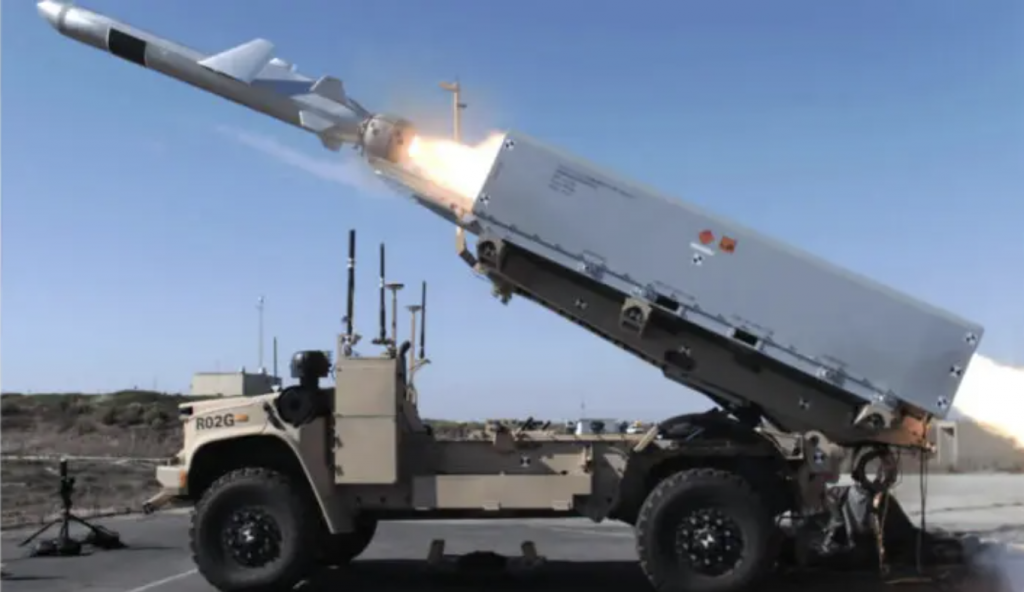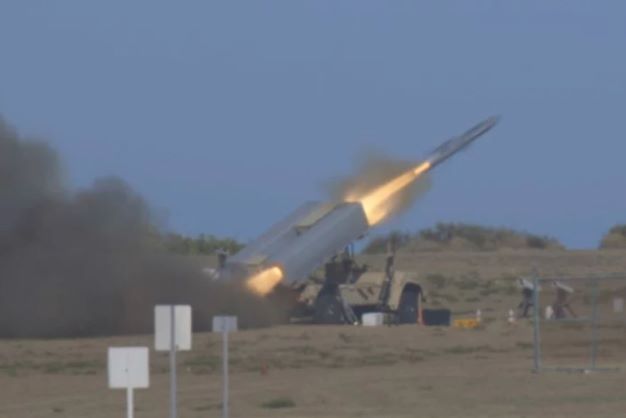An uncrewed vehicle operated by the US Marine Corps launched an anti-ship missile from the shore during a US Navy exercise. The first-of-its-kind test saw an Oshkosh Defense Remotely Operated Ground Unit for Expeditionary (ROGUE) Fires equipped with a Navy Marine Expeditionary Ship Interdiction System (NMESIS) launcher fire a Raytheon Naval Strike Missile (NSM) as part of an operational maneuver, scoring a direct hit.

The technology demonstration took place at the Sink at Sea Live Fire Training Exercises (SINKEX) in Hawaii as part of the Navy’s larger program of allowing Sailors and Marines to test new operating concepts. In this case, it was the combination of the ROGUE Fire with the NSM and the NMESIS launcher system.
The ROGUE Fire is an uncrewed vehicle developed for anti-ship missile operations and can be modified to suit mission requirements. It has no driver aboard. Instead, it is operated remotely or acts in a follow-the-leader fashion as part of a convoy. In this way, various missile platforms can be placed on station without risking personnel.

Originally developed by Kongsberg Defence & Aerospace (KDA) as a successor to the Penguin, the NSM is a multi-mission cruise missile designed to take out heavily defended targets on land and at sea. The composite material missile has a range of over 185 km (115 miles, 100 nm) a 125-kg (276 lb) HE blast-fragmentation warhead with a programmable fuse, is capable of radar evasion maneuvers and has an advanced seeker system for precise targeting using inertial guidance, GPS, terrain-reference navigation, imaging infrared homing, and an onboard target database.
Though this was the first time the missile has made a shore-to-sea attack during a US Navy exercise, the NSM has already been in service since 2012 with not only the US Navy, but the Royal Norwegian Navy, the Royal Malaysian Navy, and the Polish Navy’s coastal defense squadrons.

